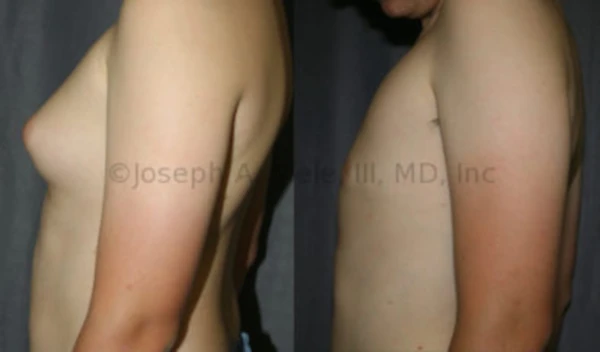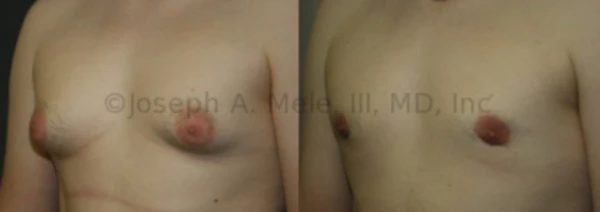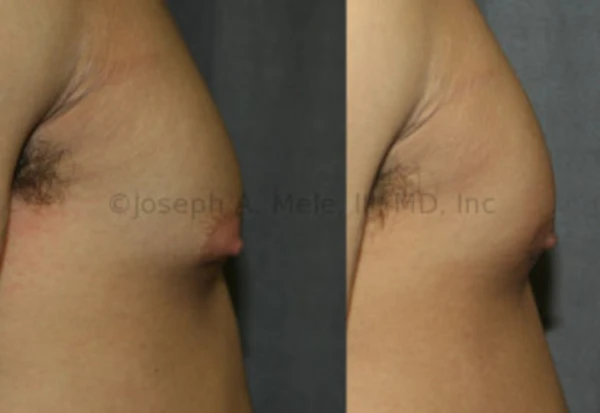
Gynecomastia reduction surgery, or in this case, massive male breast reduction, for overdevelopment of the breasts can be gender affirming.
Gynecomastia is a medical condition characterized by the enlargement of breast tissue in males. It can occur for a variety of reasons, and its development is often related to hormonal imbalances. Below I have listed some of the more common factors that can contribute to Gynecomastia.
Hormonal Imbalance: Hormonal changes play a significant role in gynecomastia. An imbalance between estrogen (female sex hormone) and testosterone (male sex hormone) levels can lead to breast tissue growth in males. This imbalance can occur at different life stages, such as during puberty, aging, or as a side effect of certain medical conditions or medications.
Puberty: Gynecomastia is relatively common during puberty. Hormonal fluctuations during this time can result in temporary breast tissue growth that resolves on its own as hormone levels stabilize about half the time. The other half of the time, Gynecomastia Reduction Surgery is an option.
Aging: As men age, there can be a natural decrease in testosterone levels and an increase in estrogen levels. This hormonal shift can contribute to the development of gynecomastia in older men.
Medications: Certain medications can be associated with gynecomastia as a side effect. These may include some antidepressants, antiandrogens, anabolic steroids and medications used to treat prostate conditions or heartburn.

Gynecomastia reduction can provide life-changing improvement for men with large breasts and puffy nipples.
Medical Conditions: Various medical conditions can lead to gynecomastia. These include obesity, thyroid disorders, kidney disease, liver disease and tumors in the testes or adrenal glands. Additionally, conditions that disrupt the body’s hormonal balance, such as Klinefelter syndrome, can also contribute to gynecomastia.
Substance Abuse: The use of recreational drugs, including marijuana, amphetamines, and anabolic steroids, can all contribute to gynecomastia. These substances can disrupt the hormonal balance in the body.
Nutritional Imbalances: In some cases, nutritional imbalances or deficiencies can be a contributing factor for the development of gynecomastia. For example, diets low in essential nutrients or high in soy products (which contain phytoestrogens) may contribute to gynecomastia.
Idiopathic Gynecomastia: Sometimes, the exact cause of gynecomastia remains unknown, and it is referred to as idiopathic gynecomastia.

Above is an example of Gynecomastia reduction for puffy nipples.
It’s essential to recognize that not all cases of gynecomastia require treatment, as some may resolve spontaneously. However, when gynecomastia is causing physical discomfort, emotional distress, or is associated with an underlying medical condition, medical evaluation and treatment may be necessary. Treatment options can include hormonal therapy, surgical removal of excess breast tissue, or addressing the underlying cause, such as discontinuing medications that contribute to gynecomastia. If you or someone you know is experiencing gynecomastia, it’s advisable to consult a healthcare professional for a proper evaluation and guidance on the most appropriate course of action
Gynecomastia Consultations
To schedule a private consultation appointment call (925) 943-6353. My staff will arrange a convenient time for us to review your specific concerns and formulate a plan to address your needs. There are several options for treatment, and the best one for you will be explained so you can make an informed decision regarding how to proceed.
Previous Post Next Post